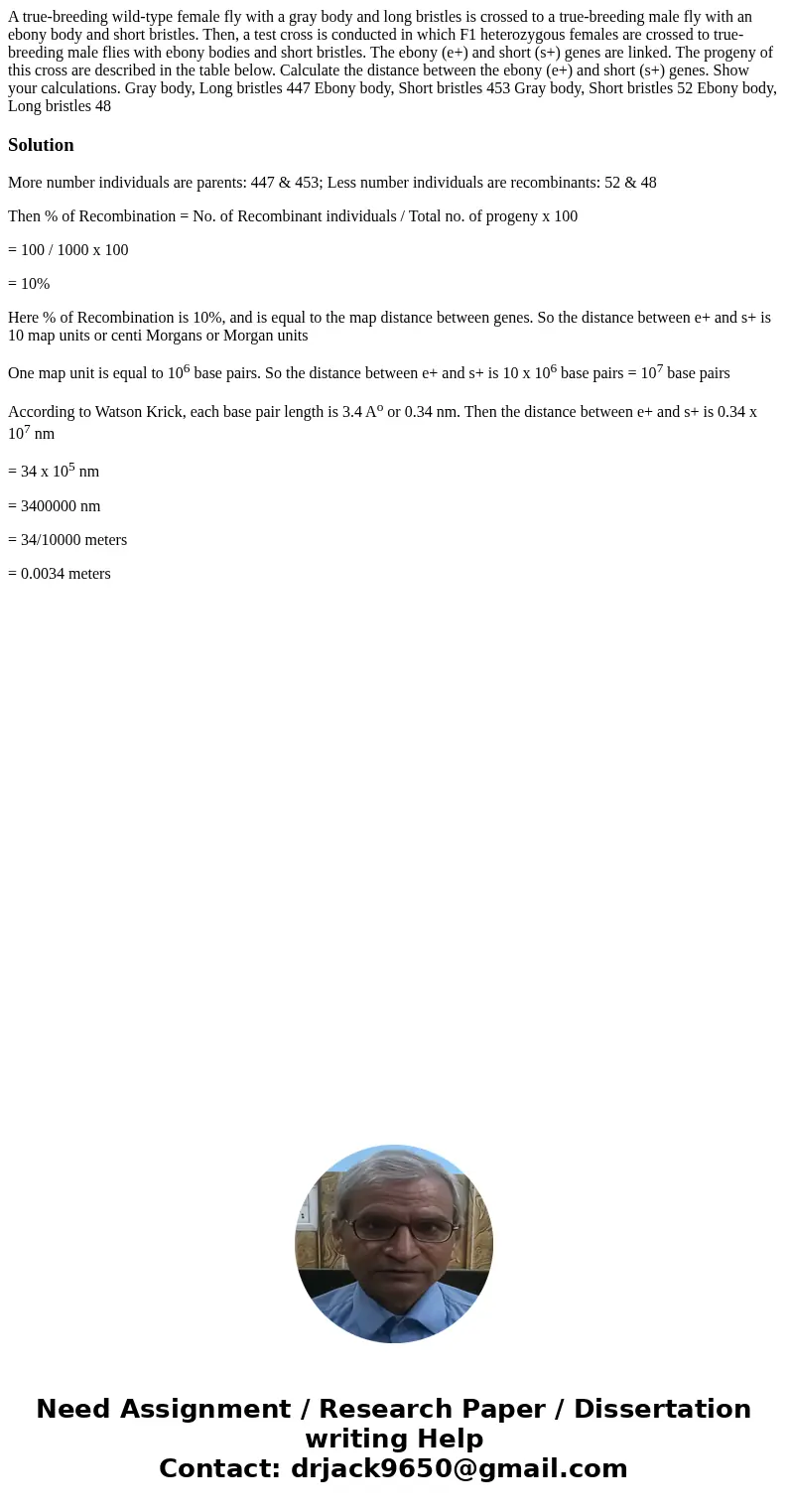A truebreeding wildtype female fly with a gray body and long
A true-breeding wild-type female fly with a gray body and long bristles is crossed to a true-breeding male fly with an ebony body and short bristles. Then, a test cross is conducted in which F1 heterozygous females are crossed to true-breeding male flies with ebony bodies and short bristles. The ebony (e+) and short (s+) genes are linked. The progeny of this cross are described in the table below. Calculate the distance between the ebony (e+) and short (s+) genes. Show your calculations. Gray body, Long bristles 447 Ebony body, Short bristles 453 Gray body, Short bristles 52 Ebony body, Long bristles 48
Solution
More number individuals are parents: 447 & 453; Less number individuals are recombinants: 52 & 48
Then % of Recombination = No. of Recombinant individuals / Total no. of progeny x 100
= 100 / 1000 x 100
= 10%
Here % of Recombination is 10%, and is equal to the map distance between genes. So the distance between e+ and s+ is 10 map units or centi Morgans or Morgan units
One map unit is equal to 106 base pairs. So the distance between e+ and s+ is 10 x 106 base pairs = 107 base pairs
According to Watson Krick, each base pair length is 3.4 Ao or 0.34 nm. Then the distance between e+ and s+ is 0.34 x 107 nm
= 34 x 105 nm
= 3400000 nm
= 34/10000 meters
= 0.0034 meters

 Homework Sourse
Homework Sourse